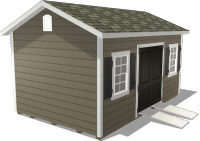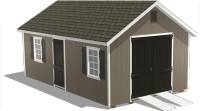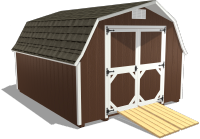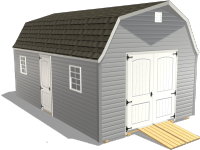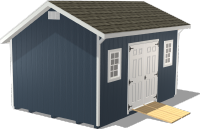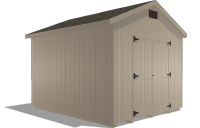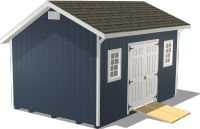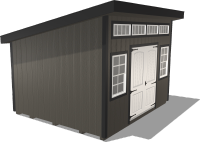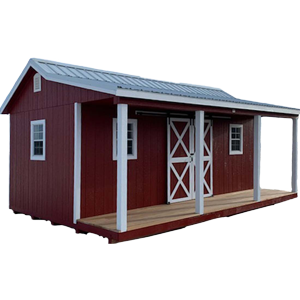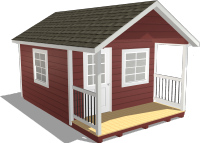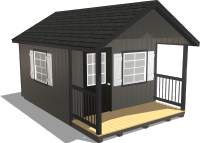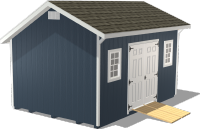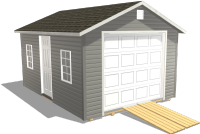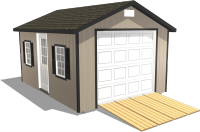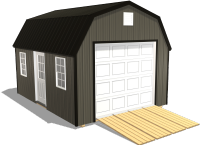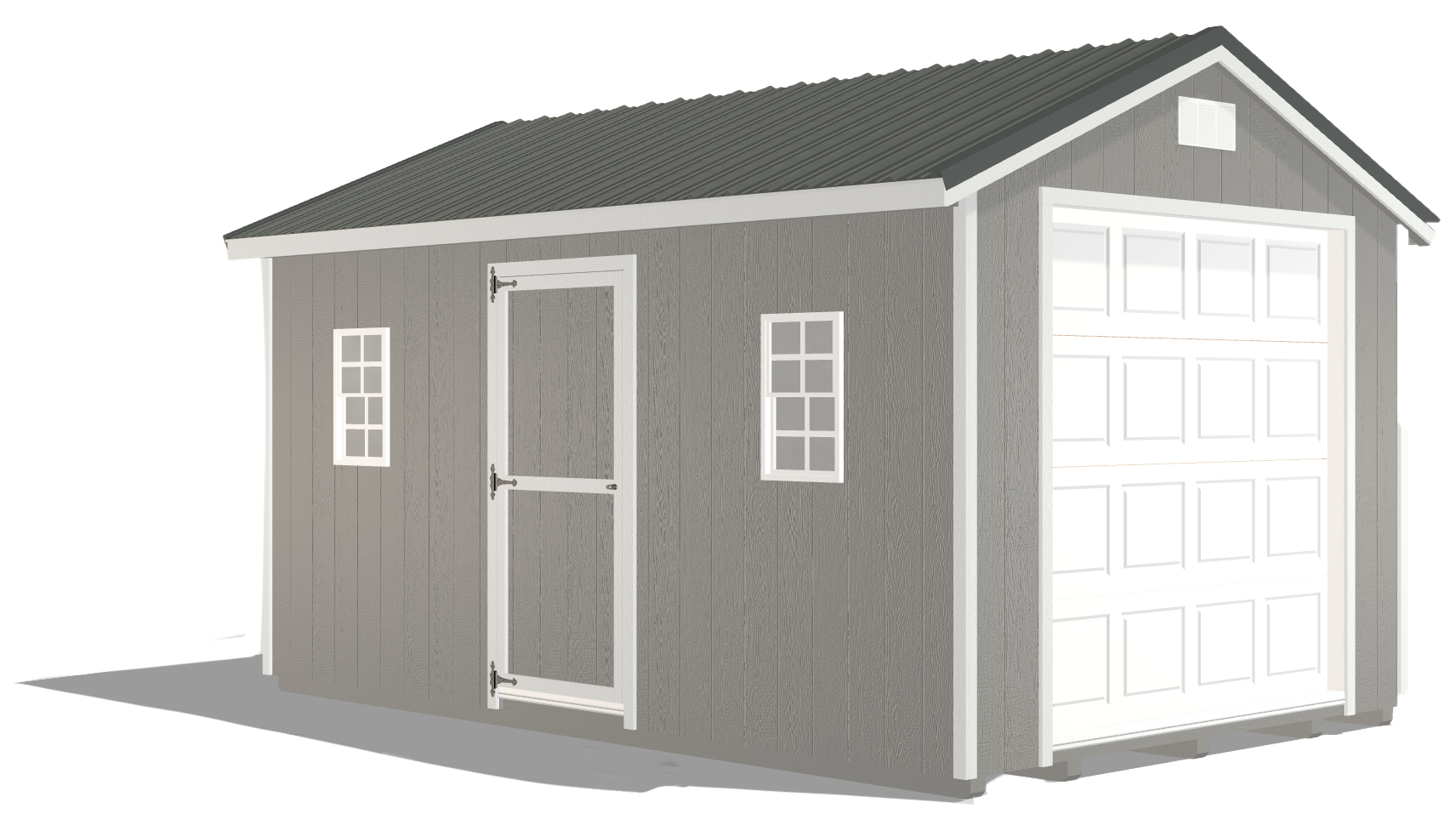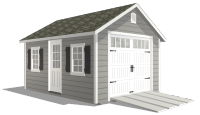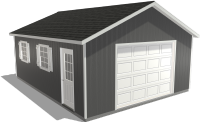Safe Haven: Building Chicken Coop Nesting Boxes to Protect Your Flock
by Dakota Storage Buildings, on August 13, 2024

For homeowners excited about starting their backyard chicken-keeping journey, choosing the right chicken coop nesting boxes is a vital part of selecting a comfortable and efficient coop setup. Nesting boxes play a crucial role in providing an environment for hens to lay eggs comfortably and safely. With the right knowledge of why nesting boxes are important to chicken coop designs, homeowners can easily create the ideal environment for their hens. Ultimately, the right nesting boxes ensure ample nesting space, prevent egg breakage, and simplify egg collection. We want to help you understand why nesting boxes matter and how to create optimal nesting environments for your hens, paving the way for a successful and enjoyable chicken-keeping experience.
Nesting Boxes: The Key to Happy and Productive Hens
Chickens have natural nesting behaviors, and providing suitable nesting spaces is essential for supporting these behaviors. Chicken coop nesting boxes encourage stress-free egg laying, reduce egg breakage, and maintain egg cleanliness. Hens feel more secure in a dedicated nesting space, which can lead to better egg production and overall flock productivity. Additionally, well-designed nesting boxes contribute to the welfare of your hens by offering a comfortable and safe environment for egg-laying. By including the right nesting boxes in your coop, you can create a more harmonious and content flock. This enhances their well-being and fosters a positive environment where your chickens can thrive.
Important Features of Quality Nesting Boxes
Understanding the key features of nesting boxes will help you create an optimal environment for your hens. By focusing on aspects like size, materials, and placement, you can ensure that your chickens have a safe and comfortable space to lay their eggs.

Size and Dimensions
The size and dimensions of nesting boxes are crucial for ensuring comfort and preventing overcrowding. Each nesting box for chicken coops should be approximately 12x12x12 inches. This provides enough space for hens to move around comfortably. The general guideline is to have one nesting box for every 4-5 hens to prevent competition and overcrowding.
Materials and Construction
Chicken coop nesting boxes can be made from various materials, including wood, plastic, and metal. Each material has its pros and cons.
Wood: Sturdy and provides good insulation but requires regular maintenance to prevent rot and pests.
Plastic: Easy to clean and maintain but may not offer as much insulation as wood.
Metal: Durable and long-lasting but can be prone to rust and may require additional insulation.
Choosing the right material depends on your specific needs and the climate in your area.
Placement and Location
Looking for nesting boxes that are strategically placed within the chicken coop is essential for providing privacy, comfort, and accessibility. Place nesting boxes in a quiet, low-traffic area of the coop, away from the roosting area to reduce disruptions. Ensure the boxes are easily accessible for hens and for you when collecting eggs and executing the required maintenance.
Setting Up Nesting Boxes in Your Chicken Coop
Including nesting boxes in your chicken coop designs involves several important steps to ensure they are functional and comfortable for your hens.

Choosing the Right Location
Selecting the best location for your nesting boxes is crucial. Place the boxes in a quiet and low-traffic area of the coop to provide a peaceful environment for your hens to lay their eggs. Avoid placing nesting boxes near the roosting area, as this can lead to disruptions and competition. Additionally, ensure that the boxes are easily accessible to both the hens and you for egg collection and maintenance.
Securing the Nesting Boxes
Once you have chosen the right location, it is essential to properly secure the nesting boxes. Ensure that the boxes are firmly attached to the walls or floor of the coop to prevent them from tipping over or shifting, which can cause stress and injury to the hens. Use sturdy brackets or screws to fasten the boxes securely. If you are using freestanding chicken coop nesting boxes, make sure they are stable and will not move around when the hens enter and exit.
Adding Bedding Materials
Creating a comfortable nesting environment is key to encouraging hens to use the boxes. Use straw, wood shavings, or other soft bedding materials to line the bottom of each nesting box. The bedding should be about 2-3 inches deep to provide a soft cushion for the eggs and to help keep them clean. Change the bedding regularly to maintain cleanliness and reduce the risk of pests and parasites. Fresh bedding also helps to control odors and keep the nesting area clean.
Maintaining Clean and Healthy Nesting Boxes
Regular cleaning and maintenance are vital for ensuring hygienic nesting conditions and promoting the health of your hens. Remove soiled bedding daily and sanitize nesting boxes periodically to prevent the buildup of bacteria, parasites, and odors. This practice helps maintain a fresh and inviting environment for egg laying, reducing the risk of bacterial growth and pest infestations. Use a mild disinfectant or a mixture of water and white vinegar to clean the boxes thoroughly. Ensure that the nesting boxes are completely dry before adding fresh bedding.

Be aware of common nesting box issues such as egg eating and broodiness. Egg eating can become a habit if broken eggs are not promptly removed. Using adequate bedding and regularly checking for damaged eggs can help prevent this. For persistent egg-eaters, consider roll-away nesting boxes that collect eggs in a separate compartment. Broodiness happens when a hen becomes fixated on sitting on eggs. This can be managed by removing the hen from the nesting box and providing plenty of space and enrichment activities to discourage the behavior. By addressing these issues promptly and maintaining clean nesting conditions, you can ensure a healthy and productive environment for your flock.
Frequently Asked Questions: Nesting Box for Chicken Coops
What should you do if hens lay eggs outside of nesting boxes?
To encourage hens to use nesting boxes, make sure the boxes are clean, comfortable, and located in a quiet area of the coop. Sometimes, placing dummy eggs or golf balls in the nesting boxes can attract hens and teach them where to lay their eggs. You should also ensure the nesting boxes are easily accessible and not overcrowded because hens may avoid them if they feel too cramped.
How can you prevent egg breakage or egg-eating behavior?
Ensure that nesting boxes for chicken coops have sufficient bedding, such as straw or wood shavings, to cushion the eggs and prevent breakage. Egg-eating can quickly become a habit among hens, so you must regularly check for signs of this behavior. Collect eggs frequently, ideally twice a day, to minimize the chances of eggs being broken or eaten. If egg-eating becomes a persistent issue, consider using roll-away nesting boxes that collect eggs in a separate compartment, out of the hens' reach.
How can I encourage reluctant hens to use nesting boxes?
Make chicken coop nesting boxes as private and comfortable as possible to encourage reluctant hens to use them. Place the boxes in a quiet, low-traffic area of the coop, away from disturbances. Adding fake eggs or placing attractive materials, such as soft bedding, inside the boxes can also help entice hens to lay their eggs there. Providing ample nesting boxes to prevent competition and overcrowding is essential for ensuring all hens have a comfortable place to lay their eggs.
Nesting Box Features for Enhanced Functionality

Creating a comfortable and efficient nesting environment for your hens involves more than just the basic setup. Innovative design features can significantly enhance the functionality of your nesting boxes, making them more convenient for egg collection and maintenance while also providing a better laying experience for your hens. Here are some design enhancements to consider:
Roll-Out Nesting Boxes
Roll-out nesting boxes for chicken coops are designed with a slight slope that allows eggs to gently roll away into a protected collection area as soon as they are laid. This feature makes egg collection easier, helps prevent egg breakage, and reduces the risk of egg-eating behavior. By keeping the eggs out of the hens' immediate reach, roll-out nesting boxes ensure the space stays clean and the eggs do not break.
Hinged or Removable Roofs
Chicken coop nesting boxes with hinged or removable roofs offer easy access for cleaning and maintenance. Regular cleaning is essential for preventing the buildup of bacteria and parasites, and a hinged or removable roof makes this task much simpler. This design feature allows you to quickly and efficiently clean the inside of the nesting boxes, ensuring a hygienic environment for egg laying and minimizing the risk of disease.
Integrated Curtains or Dividers
Adding curtains or dividers to nesting boxes can provide hens with the privacy and comfort they need to lay their eggs consistently. Curtains or dividers create a more secluded and secure space, which can reduce stress and encourage hens to use the nesting boxes regularly. This not only improves the overall egg production but also helps maintain a calm and stable environment within the coop.
Create the Perfect Nesting Environment for Your Chickens
Well-designed chicken coop nesting boxes are crucial for providing a safe, healthy, and stimulating environment for backyard chickens. By considering factors the size, materials, and maintenance, homeowners can create a nurturing and enriching space for their flock. With the right setup, you can enjoy the rewards of backyard chicken keeping while ensuring the well-being of your flock year-round. Investing time and effort into creating optimal chicken coop designs not only enhances the quality of life for your chickens but also makes the experience of raising them more enjoyable and rewarding for you. Start planning today to create a perfect sanctuary for your feathered companions.
Download our "Beginner's Guide to Raising Backyard Chickens" to learn more about setting up your coop, selecting the right nesting boxes, and ensuring the health and happiness of your flock.



